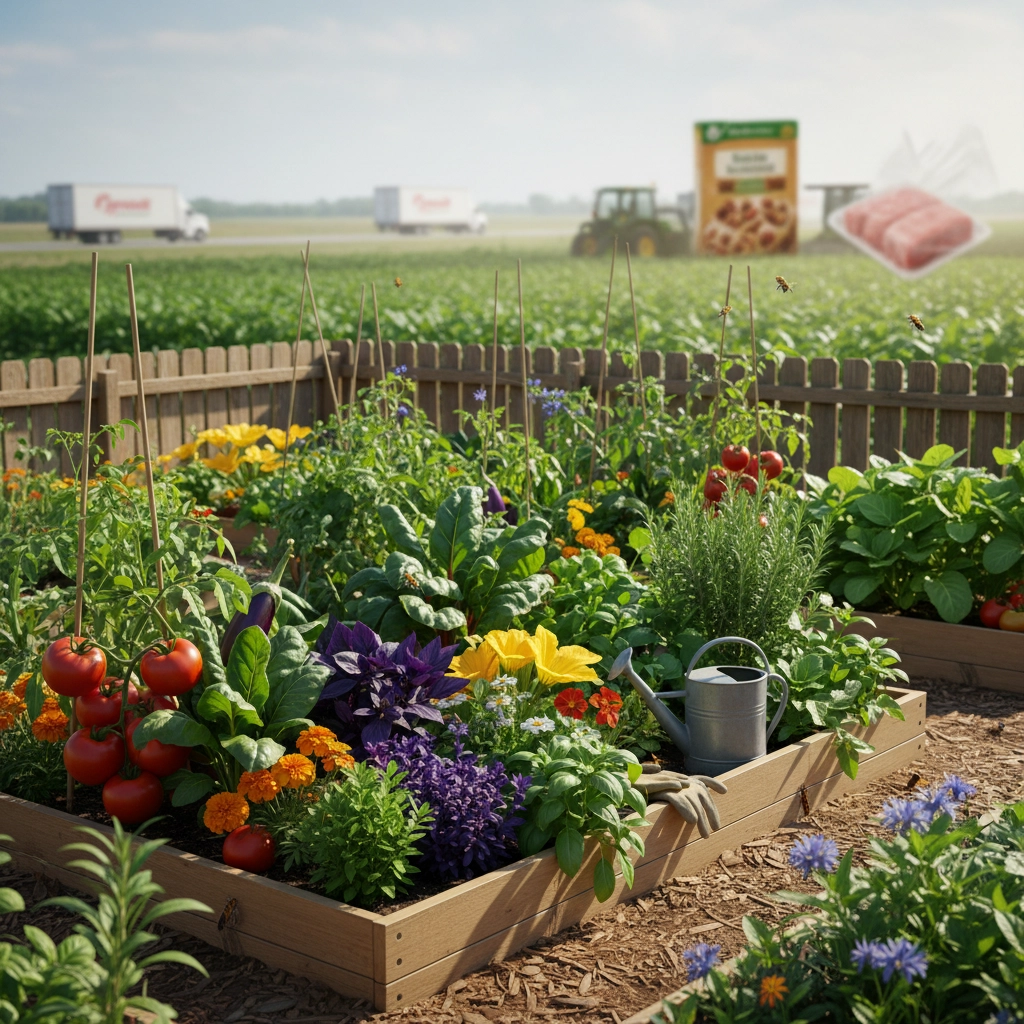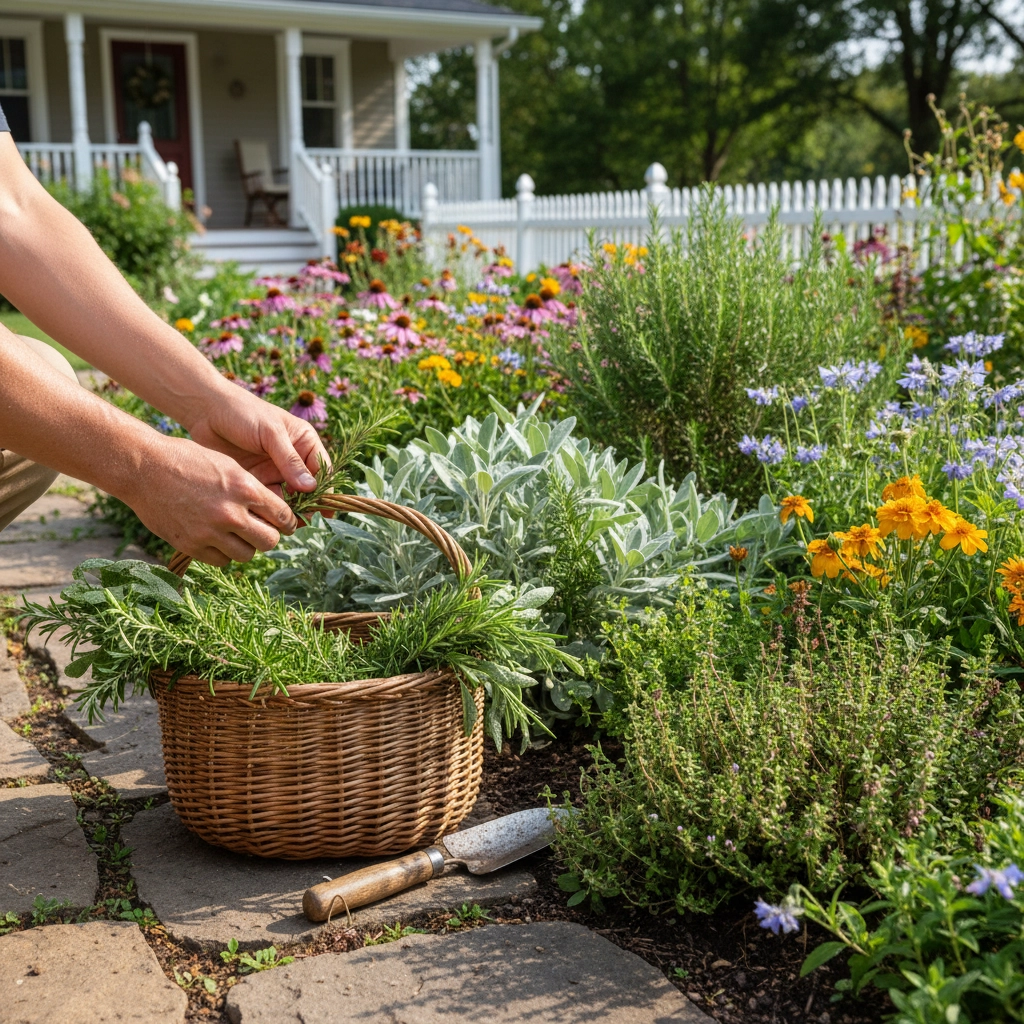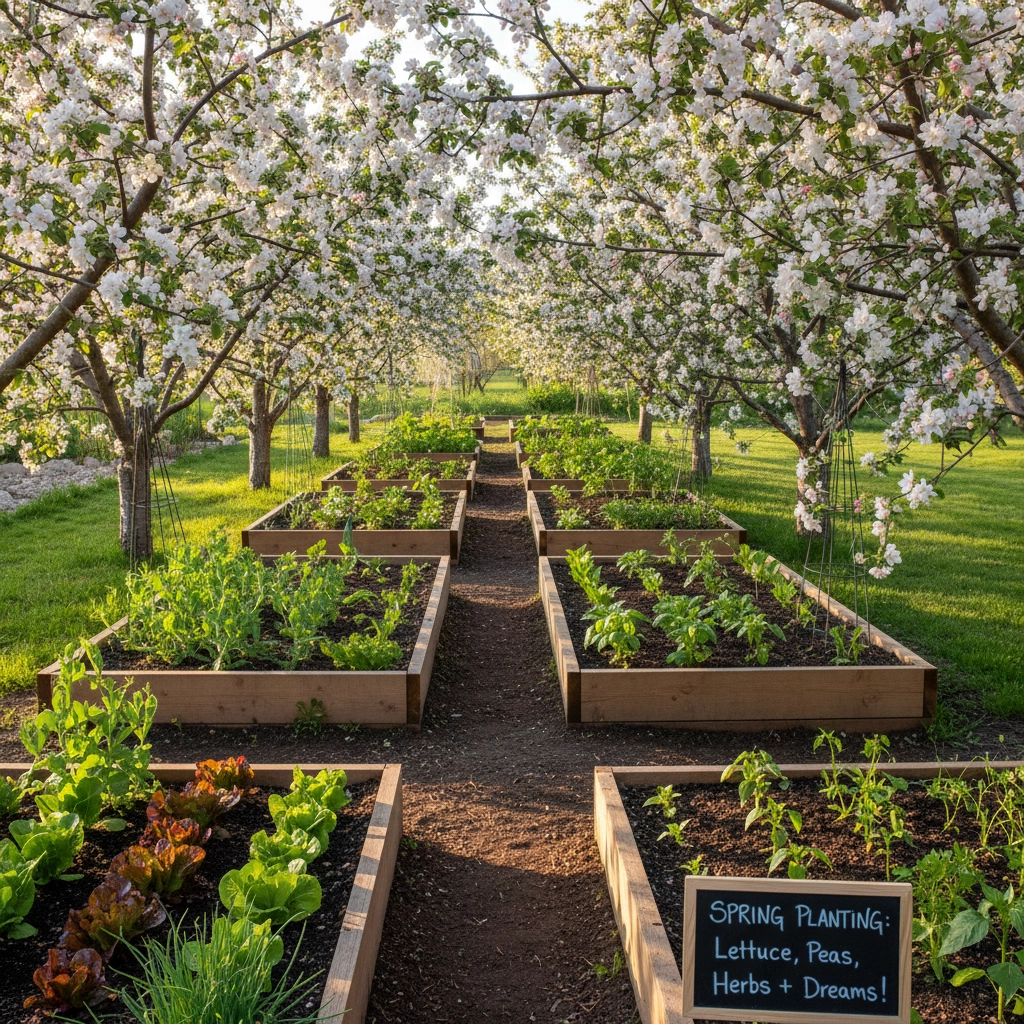The Ultimate Guide to Foodscaping: How to Blend Edible Plants with Beautiful Landscape Design in Ohio
Gone are the days when you had to choose between a beautiful yard and a productive garden. Foodscaping – the art of integrating edible plants into ornamental landscapes – is revolutionizing how Ohio homeowners think about their outdoor spaces. Instead of hiding vegetables in the backyard corner, foodscaping brings them front and center, creating stunning landscapes that feed both your family and your soul.
Think of it as the best of both worlds: you get the visual appeal of traditional landscaping with the practical benefits of growing your own food. Whether you're dealing with Cleveland's lake-effect snow or Cincinnati's humid summers, foodscaping can work beautifully in Ohio's diverse climate zones.
Why Foodscaping Makes Perfect Sense for Ohio Gardens
Economic Benefits That Add Up
Let's be honest – grocery bills aren't getting any cheaper. A well-planned foodscape can significantly reduce your food costs while increasing your property value. Fresh herbs that cost $3 at the store? You can grow them for pennies. Those expensive organic berries? Your landscape can produce them by the bucket.
Ohio's growing season, which typically runs from late April through October, gives you plenty of time to see serious returns on your foodscaping investment. Plus, many edible plants are perennials, meaning you plant once and harvest for years.
Environmental Impact
When you grow food in your own yard, you're cutting down on food miles – the distance your food travels to reach your plate. Considering the average grocery store item travels 1,500 miles, your backyard tomatoes are doing the environment a huge favor. You're also reducing packaging waste and eliminating the need for preservatives and artificial ripening agents.

Health and Wellness Advantages
Nothing beats the taste of sun-warmed strawberries picked fresh from your own landscape. When you control what goes into your soil, you control what goes into your body. No more wondering about pesticide residues or how long those vegetables sat in storage.
Planning Your Ohio Foodscape: Start Smart
Assess Your Space Like a Pro
Before you plant a single seed, walk around your yard with a critical eye. Ohio's weather can be unpredictable, so understanding your microclimates is crucial. Note which areas get full sun (6+ hours), partial sun (3-6 hours), and shade. Most vegetables and fruits need that full sun exposure, but don't worry if your yard is shadier – herbs like parsley, cilantro, and mint actually prefer some protection from Ohio's intense summer heat.
Check your soil type too. Ohio has everything from clay-heavy soil in the north to sandier compositions in other regions. A simple soil test (available at most garden centers) will tell you your pH levels and nutrient content. Most edibles prefer slightly acidic to neutral soil (pH 6.0-7.0).
Design with Access in Mind
Here's a rookie mistake: planting your edibles where they look pretty but are a pain to reach. Your herbs should be close to your kitchen door – trust me, when you're cooking dinner, you don't want to trek across the yard for fresh basil. Save the longer walks for plants you'll harvest less frequently, like pumpkins or winter squash.
Think about maintenance access too. You'll need to water, weed, and harvest regularly, so make sure you can actually reach your plants without trampling other garden areas.
Best Edible Plants for Ohio Landscapes
Herbs: The Gateway to Foodscaping
If you're new to foodscaping, start with herbs. They're forgiving, most are perennials in Ohio, and they add incredible texture and fragrance to your landscape. Rosemary creates beautiful evergreen structure (though you'll need to bring it indoors in northern Ohio winters), while lavender adds purple spikes that smell amazing and attract beneficial pollinators.
Don't overlook native herbs like wild bergamot (bee balm), which produces stunning red flowers and makes excellent tea. Thyme works beautifully as a ground cover between stepping stones, and sage provides silver-green foliage that looks sophisticated in any design.

Fruits That Double as Ornamentals
Blueberry bushes are absolute stars in the foodscape world. They produce delicate white flowers in spring, delicious berries in summer, and brilliant red-orange fall color. Plus, they're native to Ohio, so they're naturally adapted to your climate.
Dwarf fruit trees work wonderfully as focal points. Apple, pear, and cherry varieties bred for smaller spaces can anchor a garden bed while producing full-sized fruit. Look for disease-resistant varieties that can handle Ohio's humid summers without constant spraying.
Strawberry plants make excellent ground covers, especially the day-neutral varieties that produce fruit throughout the growing season rather than just one big crop.
Vegetables with Visual Appeal
Not all vegetables hide in the background. Rainbow chard produces stems in brilliant yellows, reds, and oranges that rival any ornamental foliage. Purple cabbage creates stunning blue-purple rosettes, while colorful peppers add both vertical interest and vibrant color.
Kale has become incredibly ornamental – the curly varieties add amazing texture, and the purple and red cultivars bring serious color to fall landscapes. Plant them in late summer for gorgeous cool-weather displays.
Seasonal Planning for Ohio Success
Spring: Getting Started Right
Ohio's last frost typically occurs between mid-April (southern Ohio) and mid-May (northern regions), but don't put all your tender plants out at once. Start cool-season crops like lettuce, peas, and radishes as soon as soil can be worked. These actually prefer Ohio's cool spring weather.
Plant perennial herbs and fruits in spring so they can establish strong root systems before winter. This is also the perfect time to incorporate asparagus into your landscape design – the ferny foliage creates beautiful texture, and established plants will produce spears for decades.

Summer: Peak Production and Beauty
This is when your foodscape really shines. Tomatoes, peppers, and basil hit their stride in Ohio's warm summers. Keep plants well-watered during those inevitable July heat waves, and don't forget to harvest regularly – the more you pick, the more plants produce.
Summer is also prime time for succession planting lettuce and other greens in shadier spots where they won't bolt immediately in the heat.
Fall: Extended Harvests and Planning Ahead
Ohio's falls are incredible for foodscaping. Cool-season crops get a second wind, and fall vegetables often taste better than their spring counterparts thanks to the temperature swings that concentrate sugars.
Plant garlic in October for next year's harvest, and don't forget to protect tender perennials like rosemary if you're in zones 5 or 6.
Winter: Rest and Renewal
While your landscape rests, this is perfect planning time. Study what worked and what didn't, order seeds for next year, and research new varieties to try. Many herbs like thyme and oregano will provide fresh pickings even under snow if you know where to look.
Maintenance Made Simple
Watering Wisdom
Edible plants generally need more consistent moisture than ornamentals, but that doesn't mean daily watering. Deep, less frequent watering encourages stronger root systems. A soaker hose or drip irrigation system can make your life much easier while conserving water.
Feeding Your Foodscape
Since you're growing food, soil fertility matters more than in purely ornamental gardens. Compost is your best friend – it improves soil structure while providing slow-release nutrients. Ohio's clay soils especially benefit from regular organic matter additions.
Integrated Pest Management
The same principles that keep ornamental gardens healthy work for foodscapes. Encourage beneficial insects with diverse plantings, practice crop rotation where possible, and choose disease-resistant varieties suited to Ohio's climate.
Making It All Work Together
The secret to successful foodscaping lies in thinking like a designer, not just a gardener. Consider color combinations, seasonal interest, and plant heights just like you would with any landscape design. A purple-leaved basil looks stunning next to chartreuse coleus, while trailing cherry tomatoes can cascade from containers or raised beds for vertical interest.
Ready to transform your Ohio landscape into a beautiful, productive space that works as hard as it looks good? At LeafStone Landscapes, we specialize in creating custom foodscapes that perfectly blend form and function for Ohio's unique growing conditions. Contact us today to start planning your edible landscape that will feed your family and wow your neighbors for years to come.



